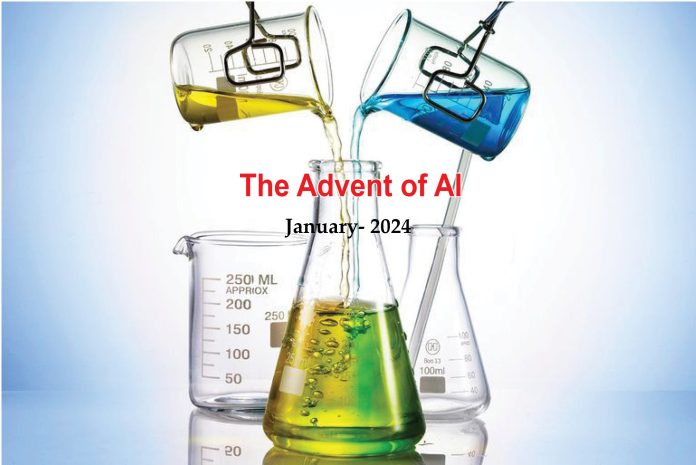AI has made rapid inroads into the way we conduct our lives and business. Yet, this is only the tip of the iceberg. While generative AI may serve as a useful productivity hack, the real power of AI is yet to be harnessed. Only then we can hope to find a speedy solution to some of the complex challenges confronting us.
The Advent of AI
AI like air is all around us. The extent to which it has infiltrated our daily lives is astonishing. AI powers virtual assistants in our smartphones customising news feeds and recommendations. AI-powered algorithms recommend movies and shows based on our viewing habits and personalise search results. Fitness trackers and smartwatches use AI to analyse health data, suggest workouts, and personalise diet plans. Chatbots powered by AI are handling customer inquiries and resolving issues 24/7. AI algorithms analyse financial transactions and identify suspicious activity to prevent fraud and protect consumers. AI-powered robots and automation streamline production processes, optimise inventory management, and improve delivery efficiency.
Breakthrough Year
2023 has been a year of incredible progress in AI research and its practical applications. This was the year generative AI captured the world’s attention, creating imagery, music, stories, and engaging conversation about everything imaginable, at a level of creativity and a speed almost implausible a few years ago. McKinsey’s report has identified generative AI as the driving force behind a surge in AI investment and adoption. Nearly a third of surveyed organisations were using generative AI in at least one function, demonstrating its practical real-world applications. AI advancements in medical diagnosis, drug discovery, autonomous vehicles, and other fields continued to impress. The FDA approval of numerous AI-powered medical devices further cemented AI’s role in healthcare. 2023 was also the year when governments across the world moved to formulate rules around content accountability and confronted ethical questions as AI went mainstream, holding out both the promise of a transformative future and fears of a dystopian society plagued with misinformation,
Problem Solving
AI approaches problem-solving differently from humans in several key ways. AI algorithms are trained on massive amounts of data, allowing them to identify patterns and relationships that humans might miss. This data-driven approach can lead to more accurate and objective solutions, especially for complex problems with many variables. AI algorithms can process information and analyse data much faster than humans. This makes them ideal for solving problems that require real-time decision-making or involve massive datasets. AI excels at identifying patterns and making predictions based on past data. This can be helpful for tasks like forecasting future trends, identifying anomalies, and making recommendations. AI algorithms can learn and adapt over time as they are exposed to new data and experiences. This makes them well-suited for solving problems that are constantly changing or evolving
Climate Change Complexity
The complexity of the climate change problem goes beyond reducing greenhouse gas emissions. It is a multifaceted issue woven into the fabric of our planet and society, posing challenges on various levels. Earth’s climate is a complex web of interconnected systems – atmosphere, oceans, land, and ice sheets. Changes in one system affect others, creating feedback loops that can amplify or dampen the overall impact. Predicting future climate requires unravelling these intricate relationships, which still have uncertainties. Our understanding of the climate system is constantly evolving. There are still “unknown unknowns,” factors we haven’t even considered that could significantly impact future outcomes. Additionally, complex systems can exhibit emergent properties, and unexpected consequences arising from the interaction of individual components. Addressing climate change requires prioritizing future generations’ well-being over immediate economic gains. This is a shift in mind-set that can be difficult for individuals and societies accustomed to short-term decision-making. AI with its formidable strength of crunching massive data is best suited to cut through the clutter of climate change complexity and enable us to take informed decisions.
Net Zero Challenge
Achieving net zero emissions by 2050 is a monumental challenge, posing an unprecedented test for humanity in terms of technological advancement, political cooperation, and societal transformation. The scale of emission reductions needed is unparalleled. Global emissions must plummet by nearly half by 2030 and reach net zero by 2050. This requires rapid deployment of clean technologies across all sectors – energy, transportation, industry, agriculture, and buildings. Some sectors lack readily available solutions for deep decarbonization. For instance, aviation and heavy industry rely heavily on fossil fuels, and viable, scalable alternatives are still under development. Carbon capture and storage technologies, while promising, need significant advancements to become cost-effective and widely applicable. Transitioning to net zero requires massive investments in clean energy infrastructure, renewable energy sources, and green technologies. Developing countries, already burdened with limited resources, may face additional challenges financing this transformation. The path to net zero is shrouded in some uncertainty. Technological breakthroughs could accelerate progress, while unforeseen events or political backtracking could hinder it. Moreover, the urgency of the climate crisis demands immediate action, leaving little room for delay or error.
Accelerating Innovation
HIGHLIGHTER: AI can turbocharge innovation in the chemical industry in many ways. It can analyse mountains of scientific literature, experimental data, and market trends, uncovering hidden patterns and potential breakthroughs that human minds might miss. AI models can simulate complex chemical reactions and materials, predicting their properties and behaviour before lab experiments even begin. This accelerates development and reduces trial and error. AI can be deployed to design new molecules and materials with specific desired properties, tailor-made for specific applications. This opens doors to entirely new classes of chemicals with unique functionalities. Repetitive tasks in research and development can be automated by AI, freeing scientists to focus on creative problem-solving and interpretation of results. Recently Microsoft Quantum team achieved a major milestone toward that vision, using advanced AI to screen over 32 million candidates to discover and synthesise a new material that holds the potential for better batteries—the first real-life example of many that will be realised in a new era of scientific discovery driven by AI.
Quriosity of BASF
In May 2023, BASF started up its new supercomputer, named Quriosity, capable of performing 3 quadrillion operations per second. It is the world’s largest supercomputer for industrial chemical research and has been built by Hewett Packard using AMD processors. This upgrades an earlier supercomputer that the company has been using since 2017. With its immense processing power, Quriosity can tackle complex tasks that would take traditional computers years, if not decades, to complete. This includes simulating chemical reactions, designing new materials, and optimising manufacturing processes. Modelling, virtual experiments and simulations are becoming increasingly complex and require more computing power. With the new supercomputer, the company claims to be able to identify and utilise previously hidden connections to drive completely new research approaches.
Epilogue
We are currently enjoying the low-hanging fruits of AI. The time is ripe to crank up the levers and take AI into a higher orbit if we have to emerge unscathed from the existential crisis posed by climate change.
































